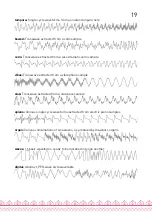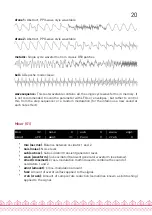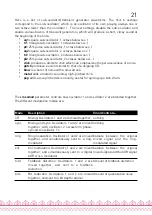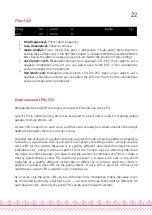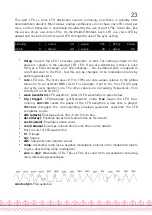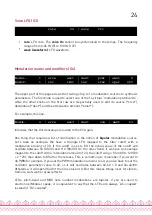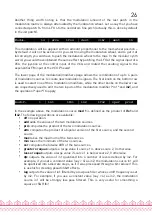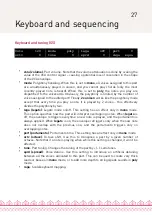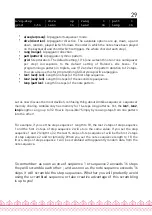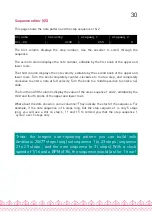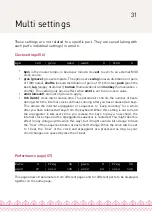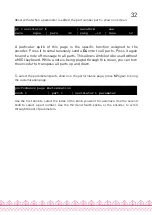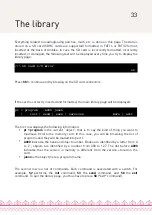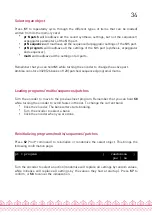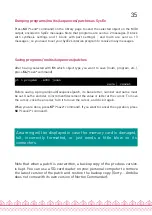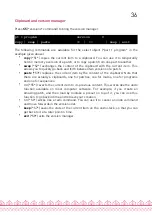
Here is a list of sub-oscillator/transient generator waveforms. The first 6 settings
correspond to the sub-oscillator, which is an oscillator of its own, playing always one or
two octave lower than the oscillator 1. The next settings disable the sub-oscillator and
enable various flavors of transient generators, which will produce a short, clicky sound at
the beginning of the note:
•
sq1
square sub-oscillator, 1 octave below osc. 1
•
tr1
triangle sub-oscillator, 1 octave below osc. 1
•
pl1
25% pulse sub-oscillator, 1 octave below osc. 1
•
sq2
square sub-oscillator, 2 octaves below osc. 1
•
tr2
triangle sub-oscillator, 2 octaves below osc. 1
•
pl2
25% pulse sub-oscillator, 2 octaves below osc. 1
•
click
produces a discrete click which can emphasizes the percussiveness of a note.
•
glitch
produces a sound similar to that of a skipping CD.
•
blow
is a burst of noise with a slow attack.
•
metal
adds a metallic sounding, high-pitched click.
•
pop
adds a low-pitched discontinuity, useful for spicing up a kick drum.
The
crossmod
parameter controls how oscillator 1 and oscillator 2 are blended together.
The different modulation modes are:
Mode
Description
Xmod Controls…
off
Mixing: Oscillators 1 and 2 are mixed together nothing
sync
Mixing and sync: Oscillators 1 and 2 are mixed
together, with oscillator 2’s waveform phase-
synced to oscillator 1’s
nothing
ring
Ring modulation: Oscillators 1 and 2 are mixed
together, and simultaneously sent to a ring-
modulator
balance between the original
mixed signal and the ring-
modulated signal
xor
Xor modulation: Oscillators 1 and 2 are mixed
together, and simultaneously sent to a digital
XOR cross-modulator
balance between the original
mixed signal and the XOR signal
fold
Foldback distortion: Oscillators 1 and 2 are
mixed together, and sent to a foldback
distortion
Amount of foldback distortion
bits
Bit reduction: Oscillators 1 and 2 are mixed
together, and sent to a bit depth reducer
Amount of quantization noise
21













